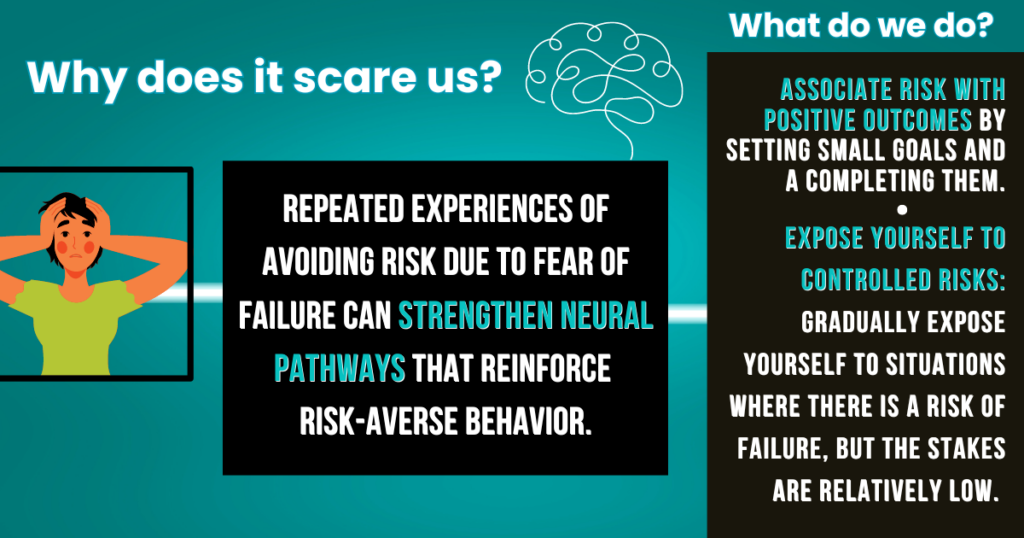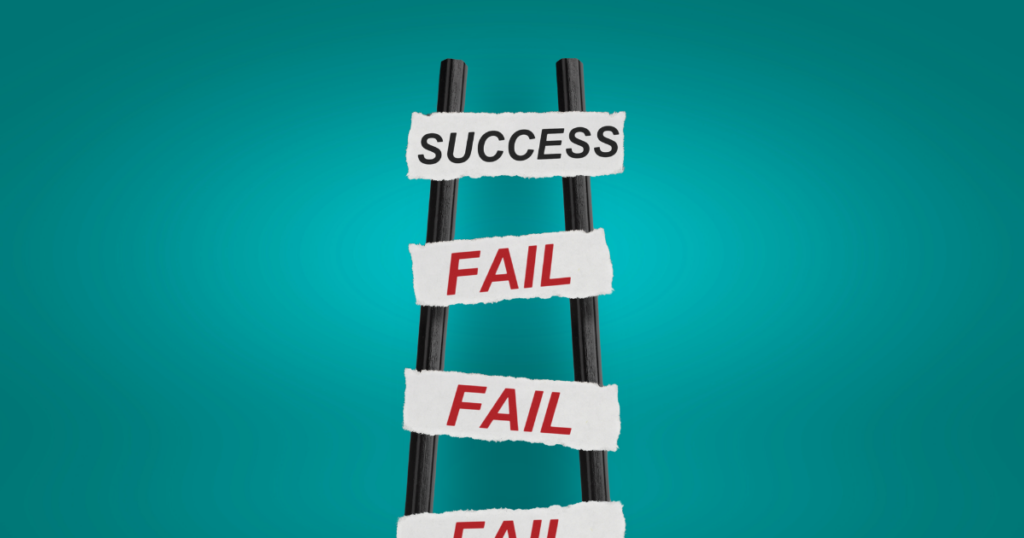Do you remember the first time you learned to ride a bike?
Maybe you were nervous about failing but the excitement to master your new found skill was enough to overcome that fear. Scraped knees weren’t gonna keep you from accomplishing your goal so even when you failed, your mind was focused on the outcome rather than the process.
As children, we’re more open to trying new things. Maybe it’s because we don’t know the potential repercussions that come with failing. Or maybe it’s because we don’t let the judgment of ourselves and others stop us.
As we grow up, we begin to taste failure… And we don’t like the taste of it. We flirt with our crush and get rejected. We run for class president and lose. We apply for that job and get declined. Ouch. We begin to link negative feelings and thoughts to the possibility of failure. This trains our brain to play it safe in all areas of our life since no one likes feeling like a loser.
BUT, research shows that our brains ACTUALLY learn best when failing! Our brains learn from failure using two main methods: avoidance learning, which helps us steer clear of the same mistake, and reward-based learning, where the brain gets a pat on the back for learning from the goof-up. Science says that our brain literally learns most from failing! Yet, most people steer away from failure. Why?
There’s more neuroscience behind that! Our brains have this area called the amygdala, which is like the alarm system for fear and threat. When we face the risk of failing or even when we do something new that makes us feel uncomfortable, the amygdala lights up and goes, “STOP! Danger!” It’s purpose is to protect us from getting hurt from what our nervous system considers a “threat”. However, sometimes it gets a bit over protective, especially in situations where the “threat” is not a saber-toothed tiger but instead is just a presentation in front of colleagues or a new project.

So what really gets hurt when we fail? If our brains learn from failure, then why do we do everything in our power to avoid it? Our fear gets in the way.
We begin wondering “Can I do this? Am I good enough to do this? Do I deserve this? What if I fail?” We must think like that child again – where the yearning for our success is greater than our fear of getting hurt.
Thomas Edison famously said, “I have not failed. I’ve just found 10,000 ways that don’t work.”
Each failure was a step towards the success of his greatest invention, the light bulb.
Stories like this aren’t just inspiring—they show that failure is a NECESSARY part of success.
Now I know that as adults we have other things to worry about, such as protecting our family or our lifestyle. So a decision like starting a business may be very different than choosing to ride a bike. I know this because I’ve done it. I left corporate to start my own business and it was one of the hardest decisions I’ve made, but I’m making more money and enjoying my life more now than when I was in corporate!
I decided to not let the fear overtake me, and conquered my brain that was working against me so that I may accomplish my dreams.
Look, here’s the reality: when you’re old, looking back at your life… what’s scarier – remembering the times you failed or the chances you never took?
The regret of inaction can haunt us, affecting our joy and our whole life.
But you know what the best part is? Neuroscience says it gets easier.
Andrew Huberman, on his podcast with David Goggins, spoke about a brain structure known as the anterior midcingulate cortex, which Huberman explained is the brain’s command center for will-power and resilience. This little piece of our brain has an INCREDIBLE effect on your WILL TO LIVE.
Essentially, the way the anterior midcingulate cortex works is that it gets stronger the more you do things that you don’t want to do. If you plan to wake up at 5 am to workout and succeed in doing so, the triumph through suffering triggers this part of the brain to grow larger and dopamine gets released into our system. However, it is not just working out or running that activates this little part of your brain– it is doing ANYTHING you don’t want to do. So if it’s doing the annoying tasks to make your dream a reality, then your anterior midcingulate cortex gets stronger and thus these tasks you view as difficult grow easier and easier.
So, what are our takeaways? Number One: Failure is part of success. It’s like the inevitable fall when you start riding a bike. Understand that your amygdala might freak out, but that’s its job. Your job is to not let the amygdala beat you out! Number Two: It gets easier! It always sucks at the beginning but as you persevere through suffering the anterior midcingulate cortex grows stronger and thus so does your will.
Break barriers and win your mental battles. Live the life you deserve!
Disclaimer: The content is for informational purposes only, you should not construe any such information or other material as legal, tax, investment, financial, or other advice. All content on this site is information of a general nature and does not address the circumstances of any particular individual or entity.

